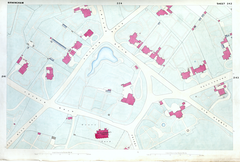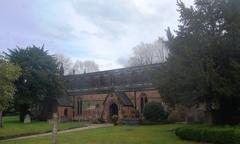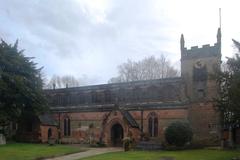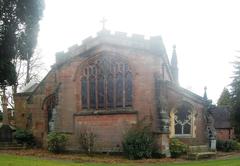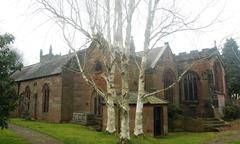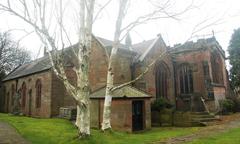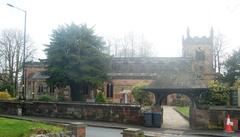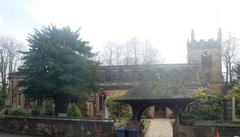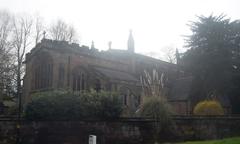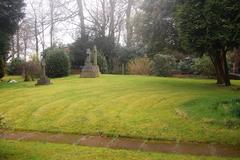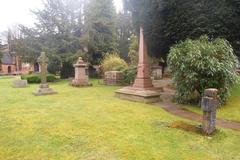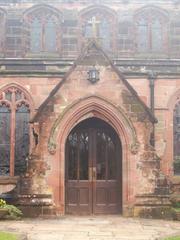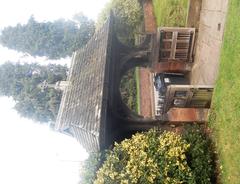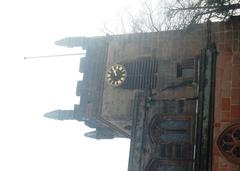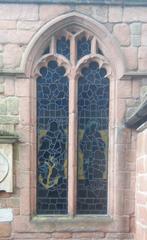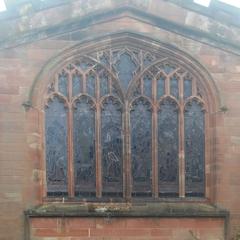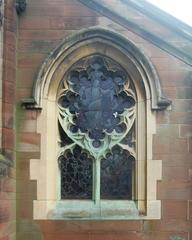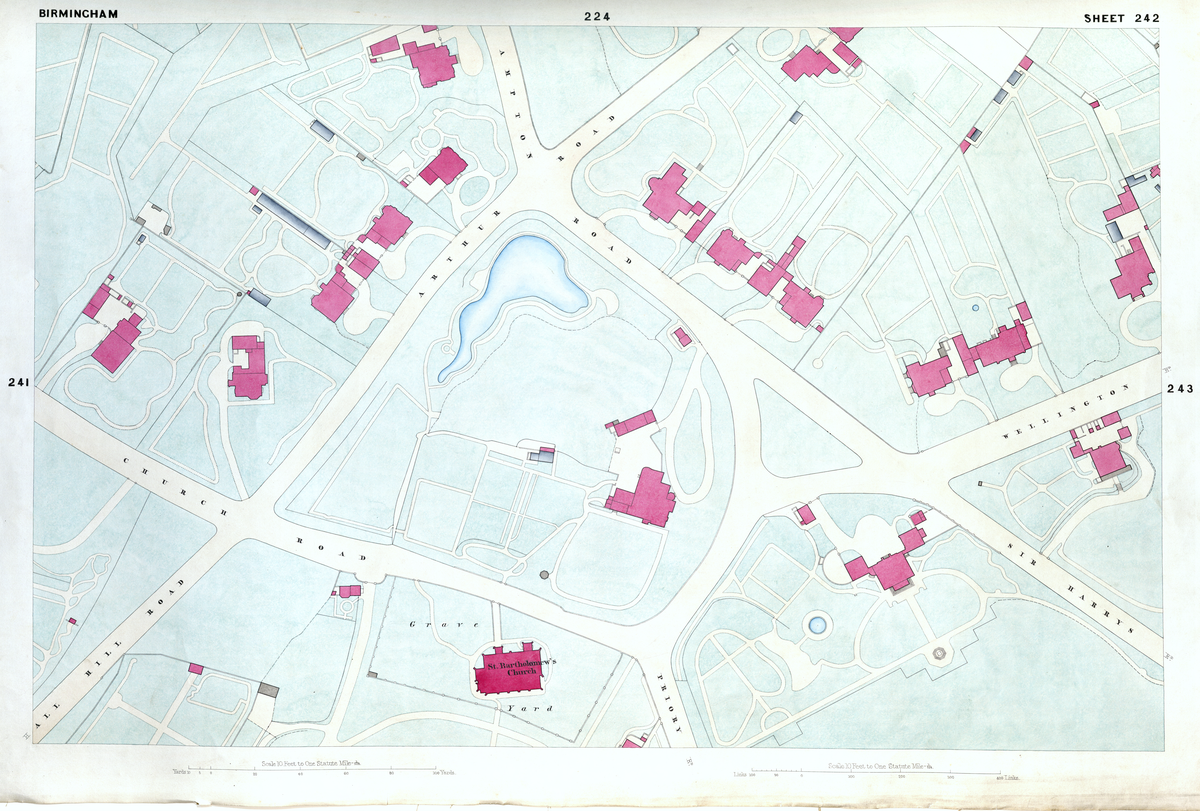
St Bartholomew’s Church Edgbaston Birmingham: Visiting Hours, Tickets, and Historical Guide
Date: 15/06/2025
Introduction
St Bartholomew’s Church in Edgbaston, Birmingham, is one of the city’s most significant historical and architectural landmarks. With a history spanning nearly a millennium—from its medieval origins through Victorian restorations to its vibrant present-day community—the church is a testament to Birmingham’s rich religious and cultural heritage. This detailed guide covers the church’s history, architectural evolution, visitor information, and tips for making the most of your visit to this iconic site.
Table of Contents
- Early Origins and Medieval Foundations
- Architectural Evolution and Significance
- Artistic Heritage and Memorials
- The Churchyard and External Features
- Role in the Local Community
- Visiting Information: Hours, Tickets, and Accessibility
- Nearby Attractions and Suggested Itineraries
- Frequently Asked Questions (FAQ)
- Conclusion
- References
Early Origins and Medieval Foundations
St Bartholomew’s Church dates back to at least the 11th century, with its earliest record in the Domesday Book of 1086, which mentions a priest at Edgbaston, indicating a church’s presence (British History Online). The original structure likely served as a small Norman chapel for the rural parish, evolving over centuries into a larger building as Edgbaston grew.
Medieval expansion saw the patronage of influential local families such as the Goughs and Middlemores. Richard Middlemore, Lord of the Manor in the late 15th century, added the north aisle, and in 1530, his widow Margerie commissioned the robust church tower, a prominent architectural feature still visible today (birmingham-future.com).
The English Civil War left deep scars on St Bartholomew’s. In the 17th century, the church was plundered by Roundhead forces under Colonel ‘Tinker’ Fox—lead was stripped from the roof for bullets, timbers and stones were repurposed for nearby fortifications, and the nave was used as stables. The church stood in ruins for over a decade before restoration began, embedding its stones with layers of national and local history (edgbaston.church).
Architectural Evolution and Significance
St Bartholomew’s Church’s architecture is a harmonious blend of medieval stonework and Victorian Gothic Revival. The oldest part is the 13th-century lower tower, characterized by Early English Gothic features such as lancet windows and simple stonework (Historic England). The 16th-century additions, including the current tower, reflect the late Gothic style.
Major Victorian transformations occurred in the 19th century, prompted by Edgbaston’s rapid population growth. The south aisle was added in 1856, and in 1885, renowned Birmingham architect J. A. Chatwin oversaw comprehensive rebuilding: he constructed a new chancel, north and south transepts, and the north arcade, integrating these seamlessly with the medieval nave. The Lady Chapel aisle was completed in 1889, and further woodwork enhancements followed in the early 20th century (wikipedia.org; edgbaston.church).
St Bartholomew’s is recognized as a Grade II* listed building, a testament to its architectural and historical importance. The listing also includes several notable monuments in the churchyard (Historic England).
Key Features:
- Medieval Tower (1530): A landmark of late Gothic architecture.
- Nave and Aisles: Medieval proportions with Victorian arcades and pointed arches.
- Chancel and Transepts: 19th-century additions by Chatwin, blending seamlessly with older fabric.
- Stained Glass: Exceptional Victorian windows, including works by Charles Eamer Kempe, depicting biblical scenes and local saints (birmingham-future.com).
Artistic Heritage and Memorials
St Bartholomew’s is renowned for its artistic and commemorative legacy. The church’s stained glass windows are masterpieces of Victorian craftsmanship, narrating both spiritual themes and local history (edgbaston.church). The east window by Charles Eamer Kempe stands out for its vibrant colors and detailed iconography.
Inside, visitors will find memorials to significant local figures, most notably Dr. William Withering, the pioneering botanist and physician associated with the discovery of digitalis (foxglove) for heart conditions. His memorial, featuring carved representations of the foxglove and Witheringia solanaceae, is a highlight for those interested in science and history (edgbaston.church; wikipedia.org).
The church’s woodwork, especially the Lady Chapel’s screen and altar furnishings, is another testament to the craftsmanship of local artisans in the late 19th and early 20th centuries.
The Churchyard and External Features
Surrounding St Bartholomew’s is a peaceful churchyard dotted with ancient yew trees and historic gravestones. Several monuments in the churchyard are Grade II listed, including the grave of architect J. A. Chatwin (wikipedia.org). The tranquil grounds provide a reflective space and invite visitors to consider the centuries of worship and remembrance that have occurred here (birmingham-future.com).
Role in the Local Community
Historically, St Bartholomew’s has served as a hub for Edgbaston’s spiritual and social life. The church hall, dating from the early 20th century, remains a venue for concerts, lectures, and community gatherings. Today, the church offers regular worship services, music programs, and educational initiatives.
St Bartholomew’s maintains strong connections with the University of Birmingham, supporting student ministry and hosting services tailored to young adults. The church actively engages in outreach, supporting local charities, combating homelessness, and fostering interfaith dialogue (St Bartholomew’s Edgbaston).
Visiting Information: Hours, Tickets, and Accessibility
Visiting Hours:
- Monday–Saturday: 9:00 AM – 5:00 PM
- Sunday: Following morning services (typically 8:00 AM, 9:30 AM, and 10:30 AM)
- Wednesday: 10:30 AM service
Hours may change for special events and holidays; always check the official website before visiting.
Tickets and Admission:
- Entry: Free for all visitors. No tickets are required.
- Donations: Welcome to support preservation and community programs.
Guided Tours:
- Available by appointment via the church website or parish office. Special heritage open days and group visits can be arranged.
Accessibility:
- Main entrance and nave are wheelchair accessible; some older areas may have uneven flooring. Assistance can be arranged—contact the parish office for details.
Facilities:
- Restrooms available during services and events.
- Guidebooks and printed materials are sometimes offered on-site.
- Photography is generally allowed outside of services.
Location and Travel:
- Church Road, Edgbaston, Birmingham B15 3TA, United Kingdom
- Accessible by car (on-street parking nearby) and public transport (local bus routes from Birmingham city centre).
Nearby Attractions and Suggested Itineraries
St Bartholomew’s Church sits in the heart of Edgbaston, a vibrant district with several notable attractions:
- University of Birmingham: Explore beautiful campus grounds and the Barber Institute of Fine Arts.
- Birmingham Botanical Gardens: Ideal for nature lovers and a short walk from the church.
- Edgbaston Cricket Ground: Perfect for sports fans and history enthusiasts alike.
- Edgbaston Reservoir: Scenic walks and outdoor activities.
Plan a half-day itinerary to combine your church visit with these sites for a richer experience of Edgbaston’s culture and history.
Frequently Asked Questions (FAQ)
Q: What are the church’s visiting hours?
A: Monday–Saturday, 9:00 AM to 5:00 PM; Sundays after morning services; Wednesdays at 10:30 AM. Check the official website for the latest updates.
Q: Is there an entry fee?
A: No, entry is free for all visitors.
Q: Are guided tours available?
A: Yes, by prior arrangement or during special events.
Q: Is the church accessible for wheelchair users?
A: The main entrance and nave are accessible; some historic areas may present challenges. Contact the parish office for assistance.
Q: Can I take photographs inside?
A: Photography is generally permitted, but check with staff during services.
Q: What’s the address and contact information?
A: St Bartholomew’s Church, Church Road, Edgbaston, Birmingham, B15 3TA, UK; Phone: +44 (121) 454-5439; edgbaston.church
Conclusion
St Bartholomew’s Church is a living testament to the enduring faith, artistry, and community spirit of Edgbaston and Birmingham at large. Its medieval roots, Victorian enhancements, and active role in modern community life make it an essential stop for anyone interested in history, architecture, or spiritual exploration. With free entry, accessible facilities, and a welcoming congregation, it is a place where the past and present meet.
For the latest updates, events, and guided tour information, visit the official website. Enhance your visit with the Audiala app for audio guides and curated Birmingham historical site experiences.
We look forward to welcoming you to St Bartholomew’s Church—your gateway to centuries of faith, art, and community.
References
- British History Online
- Historic England
- St Bartholomew’s Edgbaston
- Edgbaston Church
- Wikipedia
- Tolkien Society
- Birmingham Future
